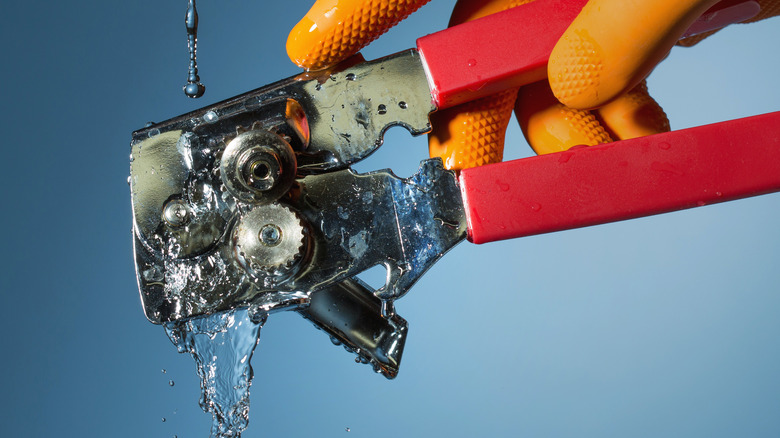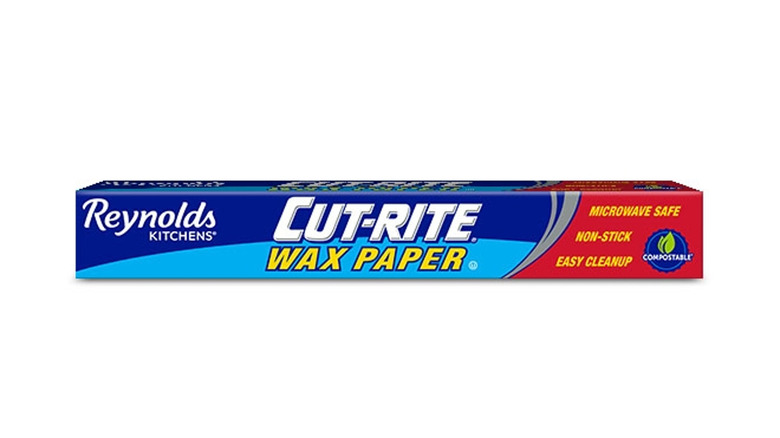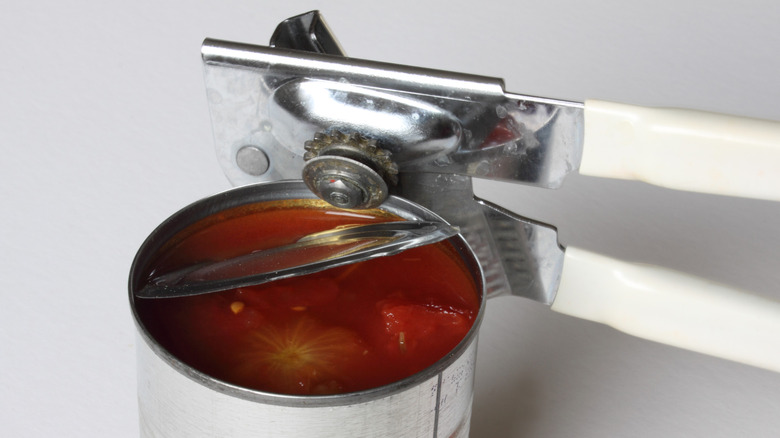You'd Be Surprised How Dirty Your Can Opener Can Get. Here's A Trick For Cleaning It
A can opener is an easy-to-overlook kitchen essential, but, have you ever tried to open a can without one? It's possible to open a can without a can opener, but these methods are meant as an absolute last resort. For a weeknight can of soup or a canned peach craving, a manual can opener is, as Food Network points out, among the "best, most-useful kitchen utensils."
Another thing that's easy to overlook is cleaning a can opener. Insider identifies the sneaky dirtiest things in our kitchens. Our kitchen sponge isn't that surprising, but it's always worth mentioning these need to be cleaned, and shouldn't last more than two weeks. Cabinet knobs, coffee maker reservoirs, sink strainers, refrigerator doors, and blender gaskets also made the list.
You might be surprised at the can opener being a germ-breeding kitchen tool but do you really pay attention to how deep those round blades penetrate into the can? The contents stick to those blades and become a breeding ground for potentially harmful microorganisms. In fact, a study from NSF revealed that a can opener can harbor Salmonella, E.coli, yeast, and mold.
The best ways to clean your can opener
Now that you know how dirty your can opener can get, it's simple enough to rinse with dish soap and wipe clean after each use. But, you'll probably have to get it back to being completely clean before introducing your newfound can-opening cleaning habits.
Some can openers are dishwasher safe. If yours is one of those models, simply add it to your next cycle. If not, Better Homes and Gardens suggests using white vinegar to soak the gears for a minute and using an old toothbrush to scrub away the grime. Then you can wash it with dish soap, rinse, and dry it thoroughly.
According to the "Rachael Ray Show," wax paper is another great way to clean a neglected can opener. Fold up a sheet of wax paper for some extra thickness, and put it between the blades of the can opener. Then just squeeze the blades together, and "open the wax paper can." This will grab onto any stubborn dirt and residue. Plus, as Angi points out, the wax will lubricate the moving parts, making the can opener easier to use. Be sure you're using wax paper, though, as there can be some confusion about whether parchment paper is the same as wax paper. It's not.
Is it time for a new can opener?
Inspecting your can opener might be a time to give this oft-overlooked tool some thought. It might be time for a can opener upgrade in your kitchen.
You can opt for an electric model if you have the extra counter space, and this type of opener is also good for those who have difficulty using a manual can opener. If you do have mobility issues, but no counter space, a battery-operated, handheld can opener is another option.
For more traditional, manual can openers, America's Test Kitchen suggests forgoing the newer, safety models that puncture the side of the rim of the can. While it avoids creating a sharp edge, it can be hard to tell when if it has made a good grip on the can, so they prefer old-fashioned, traditional openers, which puncture the top of the lid. The risk of a sharp edge is offset by how much easier these are to use.
Between handwashes with warm soapy water, and the wax paper trick, your can opener should last a very long time.


